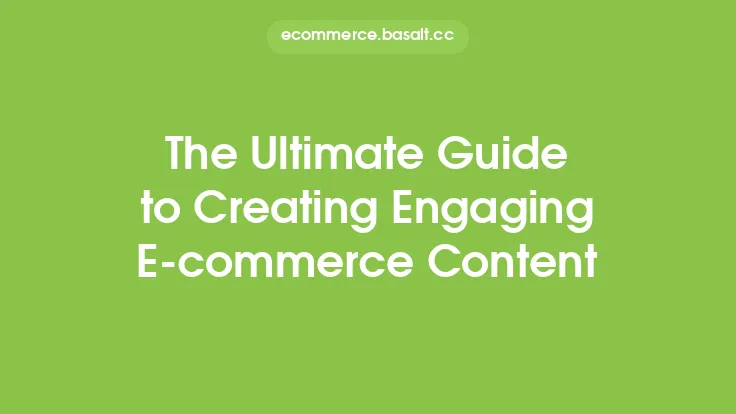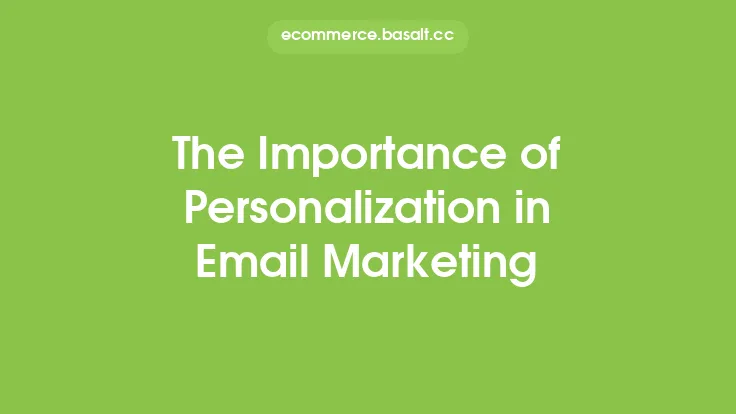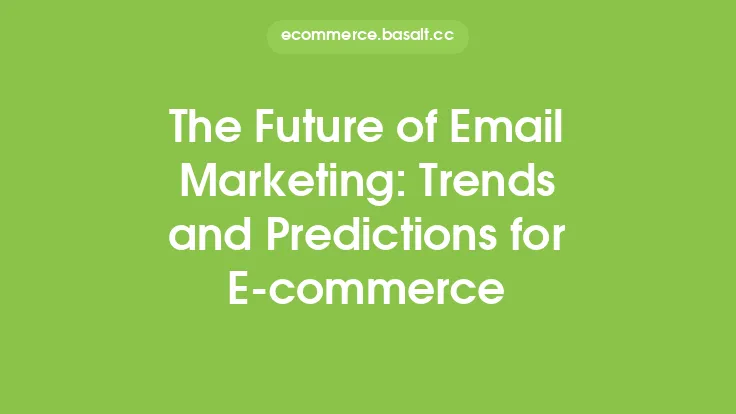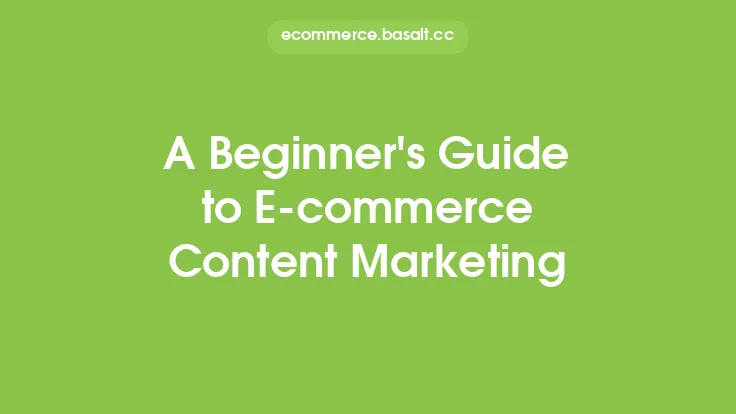Creating an effective email marketing campaign is crucial for e-commerce businesses to reach and engage with their target audience, drive conversions, and ultimately boost sales. With the ever-increasing number of emails being sent daily, it's essential to craft campaigns that stand out from the crowd and resonate with subscribers. In this article, we'll delve into the fundamentals of creating successful email marketing campaigns that yield tangible results.
Understanding Your Audience
To create effective email marketing campaigns, it's vital to have a deep understanding of your target audience. This includes their demographics, preferences, behaviors, and pain points. By knowing your audience inside out, you can tailor your campaigns to meet their specific needs, increasing the likelihood of engagement and conversion. Conducting market research, analyzing customer data, and gathering feedback are excellent ways to gain valuable insights into your audience's characteristics and preferences. This information will serve as the foundation for crafting compelling email content that resonates with your subscribers.
Setting Clear Goals and Objectives
Before launching an email marketing campaign, it's essential to define clear goals and objectives. What do you want to achieve with your campaign? Are you looking to drive sales, generate leads, or increase brand awareness? Establishing specific, measurable, achievable, relevant, and time-bound (SMART) goals will help you stay focused and ensure your campaign is aligned with your overall marketing strategy. Additionally, setting clear objectives will enable you to track the success of your campaign and make data-driven decisions to optimize future campaigns.
Choosing the Right Email Marketing Platform
Selecting the right email marketing platform is critical to the success of your campaigns. With numerous options available, it's essential to choose a platform that meets your specific needs and budget. Consider factors such as ease of use, scalability, automation capabilities, and integration with other marketing tools. Popular email marketing platforms include Mailchimp, Constant Contact, and Klaviyo, each offering a range of features and pricing plans to suit different business requirements. When choosing a platform, consider your current and future needs, as well as the level of support and resources provided by the vendor.
Crafting Compelling Email Content
The content of your email campaign is crucial to its success. Your email should be attention-grabbing, engaging, and relevant to your audience. Start with a clear and concise subject line that sets the tone for the rest of the email. Use a personalized greeting and introduction to establish a connection with your subscriber. The body of the email should be easy to scan, with short paragraphs, bullet points, and relevant images. Use a clear and prominent call-to-action (CTA) to direct subscribers to a specific landing page or offer. Finally, include a professional signature and contact information to build trust and credibility with your audience.
Designing Visually Appealing Emails
The design of your email campaign is just as important as the content. A well-designed email can help grab the attention of your subscribers and increase engagement. Use a clean and simple layout, with a clear hierarchy of information and plenty of white space. Choose a color scheme that reflects your brand and is visually appealing. Use high-quality images and graphics to break up the text and add visual interest. Ensure your email is optimized for mobile devices, as an increasing number of subscribers are opening emails on their smartphones. Use responsive design techniques to ensure your email adapts to different screen sizes and devices.
Building and Segmenting Your Email List
Building a high-quality email list is essential to the success of your campaigns. Focus on acquiring subscribers who are genuinely interested in your brand and products. Use opt-in forms on your website, social media, and other marketing channels to collect email addresses. Segment your list to tailor your campaigns to specific groups of subscribers. Use demographics, preferences, and behaviors to create targeted lists and increase the relevance of your campaigns. Avoid buying or renting email lists, as this can lead to low engagement and high spam complaints.
Optimizing and Testing Your Campaigns
Optimizing and testing your email campaigns is crucial to improving their performance and increasing ROI. Use A/B testing to compare different subject lines, CTAs, and email content. Analyze the results to identify which elements are driving the best engagement and conversion. Use this data to refine your campaigns and improve future performance. Additionally, use analytics tools to track key metrics such as open rates, click-through rates, and conversion rates. Use this data to identify areas for improvement and optimize your campaigns for better results.
Ensuring Deliverability and Avoiding Spam Filters
Ensuring deliverability and avoiding spam filters is critical to the success of your email campaigns. Use a reputable email marketing platform and follow best practices for email authentication and verification. Avoid using spammy keywords and phrases in your subject line and email content. Use a clear and visible unsubscribe link to allow subscribers to opt-out of future emails. Monitor your spam complaint rates and take action to reduce them. Use email validation tools to ensure your email list is accurate and up-to-date.
Measuring and Evaluating Campaign Performance
Measuring and evaluating the performance of your email campaigns is essential to understanding their effectiveness and identifying areas for improvement. Use analytics tools to track key metrics such as open rates, click-through rates, and conversion rates. Use this data to refine your campaigns and improve future performance. Additionally, use metrics such as return on investment (ROI) and return on ad spend (ROAS) to evaluate the financial performance of your campaigns. Use this data to make informed decisions about future campaigns and allocate your marketing budget effectively.
Best Practices for Email Marketing
Following best practices for email marketing is crucial to ensuring the success and effectiveness of your campaigns. Use personalization and segmentation to tailor your campaigns to specific groups of subscribers. Use clear and concise language in your subject line and email content. Avoid using spammy keywords and phrases, and use a clear and visible unsubscribe link. Use analytics tools to track key metrics and refine your campaigns for better performance. Additionally, use email marketing automation tools to streamline and optimize your campaigns, and use responsive design techniques to ensure your emails are optimized for mobile devices.
Common Email Marketing Mistakes to Avoid
Avoiding common email marketing mistakes is essential to ensuring the success and effectiveness of your campaigns. Avoid buying or renting email lists, as this can lead to low engagement and high spam complaints. Avoid using spammy keywords and phrases in your subject line and email content. Avoid using too many images or too much text, as this can make your email difficult to scan. Avoid using a generic greeting or introduction, and avoid using a CTA that is not clear or prominent. By avoiding these common mistakes, you can create effective email marketing campaigns that drive engagement, conversion, and revenue for your e-commerce business.





